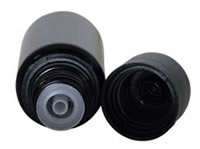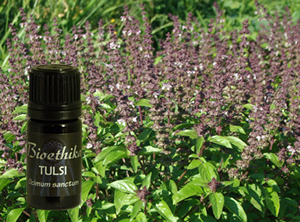New Essential Oils: Tulsi and Ravintsara |
m | ||||||||
Posted to Subscribers on 19 November 2010 |
|||||||||
|
|
Dear Subscribers, Every day people ask something or other about essential oils. Here are some quick answers to questions. Why Diffuse? Urging people to diffuse is not part of my personal insanity but rather well grounded in my own desperate attempt to recover from absolutely massive mold infection. So, here is a short punch list of why I stand by this strategy:
Doses People who are used to inferior oils always question my advice to use just one drop. They are always asking for larger bottles, but hardly anyone needs a larger bottle of the most therapeutic oils. Though like everyone else, I need to pay my bills, I do not want to sell more at the expense of anyone's health. So, regardless of what you think you know about oils, these are full strength, unadulterated, and strong. One drop!
New Oils First, I need to make a tiny announcement. The oils not only have new labels and violet glass bottles, but they now have the name Bioethika on the label instead of Sacred Medicine Sanctuary. Some of you are very subtle and you are going to read a lot into this change. Go ahead and guess! The violet glass is exquisite and will extend the shelf life of the oils. Please reuse these bottles because they are fine quality and do not belong in a recycling place. You can use the empty bottles to start making your own blends!
I actually got the labels on the Tulsi over Diwali so there was a sort of ritual to introducing the new line. Tulsi is generally used to clear the mind or prepare a space for religious observances; but it is potentially irritating to the skin so if used externally, it needs to be used sparingly in a carrier. Once significantly diluted, it can be applied directly on the skin to clear infections, including acne. This oil is very inexpensive so you can consider using it for do-it-yourself projects like candles to repel insects. The other addition to the catalogue is Ravintsara. It requires considerably more introduction because of confusion over two similar sounding oils that are actually different. Ravensara and Ravintsara are both from Madagascar, but Ravintsara is a type of camphor that was not indigenous to the island but rather introduced in the 19th century. It no longer yields camphor but rather cineole and therefore smells more like eucalyptus than Asian camphor. It is a perfect oil for winter diffusing because it relieves upper respiratory congestion and infection. It is absolutely nontoxic and safe for use around children, i.e., think about where you might be able to use it, even if after hours! More remarkably, ravintsara is not irritating to the skin, but it is nevertheless a superb disinfectant. Ravintsara is a strong antiviral and nervine. If you already have some of this oil and are not sure if it is labeled correctly, sniff it. If it smells more like licorice or anise, it is ravensara; if it smells more like eucalyptus with a hint of camphor, it is ravintsara. Ravintsara diffuses superbly and blends well with eucalyptus and citrus oils. Many also like to combine it with spices. Many blessings, Ingrid
Copyright by Ingrid Naiman 2010
|
||||||||
Home || Contact Us |
|||||||||
No content on any of the pages of this web site may be reproduced without written permission of Ingrid Naiman and Seventh Ray Press, publisher of this site. |
|||||||||
|
|||||||||
 grabbed an unopened bottle that happened not to have a reducer. Our bottles have reducers so you get a drop but this was lacking the reducer so the entire bottle emptied onto my carpet. No stain was left but the aroma lingered and lingered and lingered. Clove is very strong which is why in the diffuser blend, I have some other oils that are less intense.
grabbed an unopened bottle that happened not to have a reducer. Our bottles have reducers so you get a drop but this was lacking the reducer so the entire bottle emptied onto my carpet. No stain was left but the aroma lingered and lingered and lingered. Clove is very strong which is why in the diffuser blend, I have some other oils that are less intense.
